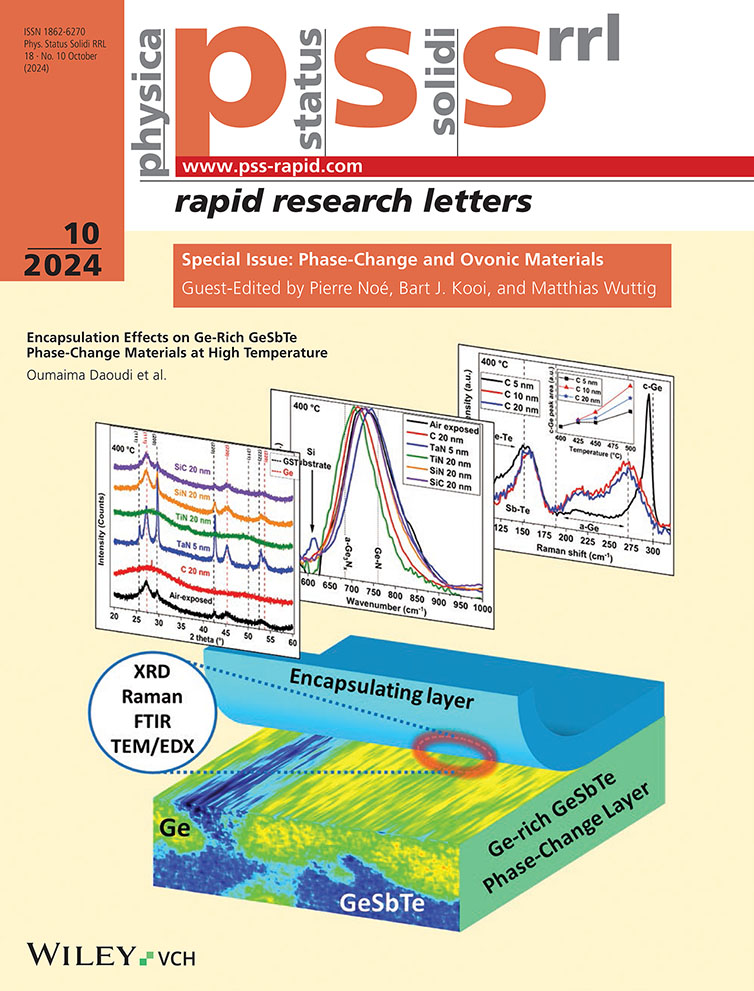Modified Electronic Structure of Amorphous Mn–Si–Te for Ovonic Threshold Switch Application: Improved Thermal Stability by the Formation of Mn–Te Bonding
Abstract
A critical element within the 3D XPoint architecture is the Ovonic threshold switch (OTS) material, which serves a crucial role as a selector. The development of novel OTS materials devoid of hazardous elements such as As and Se is imperative for mitigating environmental impact. The Si–Te binary telluride is a representative As/Se-free OTS material, demonstrating stable switching. However, its thermal stability is insufficient for enduring annealing processes in semiconductor manufacturing. To address this challenge, this study proposes the incorporation of Mn into the Si–Te alloy. While the introduction of transition metals into chalcogenide glass typically reduces the electrical resistivity, potentially compromising the ON/OFF ratio, the OFF current for the device containing 26 at% Mn is observed to be lower than that for the undoped Si–Te device. Furthermore, the thermal stability of the Mn–Si–Te film surpasses that of its pristine counterpart. X-ray photoelectron spectroscopy and density-functional theory simulations provide evidence of Mn–Te bonding formation in the Mn–Si–Te amorphous alloy, thus suggesting the role of Mn–Te bonding in enhancing thermal stability. In these findings, a promising avenue for the advancement of novel OTS materials is provided.
Conflict of Interest
The authors declare no conflict of interest.
Open Research
Data Availability Statement
The data that support the findings of this study are available from the corresponding author upon reasonable request.




